Within the vintage Rolex community, there are two websites that have become indispensable to collectors: gmtmaster1675.com and explorer1016.com. The creator of these sites, Andrew (or @t_swiss_t on Instagram), has become a fixture in the collector world, fielding inquiries and questions about vintage Explorers and GMTs from even the most tenured dealers and making appearances in both Reference Points articles from HODINKEE (here and here). He also has a tight and extremely well-rounded collection that he shares through his Instagram.
I first met Andrew in 2015 when we were both living in Chicago. Both of us were young, bright-eyed, and absolutely hooked on vintage watches, though we lacked serious experience and knowledge. When we met, Andrew had only one vintage watch – a gorgeous vintage Omega Speedmaster (ref. 105.012) that he purchased from Bulang & Sons – but we soon became bad influences on each other in the best of ways, often competing for the very same watches on Craigslist or eBay. Over the years, this “watch friendship” grew into a true friendship (that still features watches), and as I launch this new series of Collector Interviews, there was no other choice for the first conversation.
We have since moved to opposite sides of the country, but we recently hopped on a video call to chat about how his websites came to be, how watch collecting has evolved since 2015, what excites him most about the watch scene today, and much, much more.
Andrew – my dear friend. Thank you for taking the time to chat with me for the very first Collector Interview.
Of course! My pleasure.
I’ll start with a softball – you’re seen as a veteran collector nowadays, but everyone has an origin story. What is yours?
Shockingly this is not something I’ve ever thought about, despite the numerous Talking Watches episodes and all that stuff. I feel like for most people, if they’re being honest, it’s a very boring, like, “all right, I saw watches here or there in my life and finally decided to buy one.” I guess mine is somewhere in the middle – my grandfather fled Russia in the 1950’s and ended up in Caracas, Venezuela for a time. While he was there, he was given an Omega pocket watch as compensation for fixing a safe, which was his trade. Perhaps because of his trade, he came to like mechanical things and was always into watches. It skipped my dad completely – he doesn’t give a crap about any of this stuff – but I have my grandfather’s pocket watch and I’ll have it until the day I die. I suppose getting my grandfather’s pocket watch was my first entry into this world, though it took much longer for me to get seriously interested in watches.
My roommate during residency was Swiss and his father had given him an IWC chrono as a gift when he graduated from med school. We talked about the watch, and soon we both become interested in watches more generally. We started picking up extra shifts and moonlighting to earn money faster, and soon, we each bought a watch. Mine was a 105.012 Speedmaster. Once I took that step, I was fully hooked and it just continued from there.

Did your grandfather have any other watches?
He also had a Serpico Y Laino double-signed Rolex Day-Date from the 50’s.
Wait – how have I never seen this or heard about it?
It was passed down to my uncle, but unfortunately it was destroyed in a fire about ten years before I was truly “into” watches. I’ve pieced it together through old photos – you can definitely see the extra line of text on the dial and that’s the only retailer I’m aware of in Venezuela.
Tragic.
Yes, it really is.
You do have a pretty unbelievable watch that was passed down to you, just not from your family. Remind me about the backstory of your Rolex Submariner ref. 5512.
Sure – there was an older gentleman who attended the same Orthodox church as me in Chicago, and as we’d gotten to know each other socially over the years, I had mentioned that I was into watches at some point. You know how it is – you’re excited about a new hobby and you just want to share it with anybody who will listen. So about six months after we’d had that conversation, he called me on St. Andrew’s Day (whom I was named after) and said that he remembered our conversation about watches and had just found his old watch in a drawer. He hadn’t used it in over 20 years and said he wanted me to have it. At the time, I didn’t have deep knowledge about vintage Rolex and didn’t know anything about 5512s, so it was pretty incredible to be given such a rare watch – particularly from someone who didn’t even know me that well.

Why did he originally buy the Submariner?
Yes, this is the best part of it. He had grown up in Kentucky and after being a Fulbright scholar, enlisted in the U.S. Navy in the 1950’s. He ended up doing marine scuba training in the Florida Keys and bought the Submariner for use on his dives. He continued to wear the watch while doing reconnaissance missions in Cuba during the Cuban Missile Crisis, and then subsequently wore the watch while in Vietnam as a marine, where he did multiple tours. When he gave me the watch, he also said he’d logged 127 parachute jumps, all while wearing the watch. He eventually left the Marines to become a minister and ended up leading a quiet, monastic life after all of the chaos he’d seen.
The watch wasn’t perfect when he gave it to me, given the life it had led. It was missing its bezel insert, had replaced hands, and had been polished over the years. But the dial is really great, other than some slight spidering of the gloss, and it’s a Mk 1 dial, which makes it really interesting. It was early in my collecting days, but I was able to find the period correct hands and bezel insert and fully “restored” the watch not long after receiving it. I’ve also chosen to leave the case alone. I thought about getting it re-cut at one point, but the watch has lived such an interesting life that I can’t bring myself to alter it.
Incredible story, particularly since he wasn’t even family! And definitely a watch you can never sell, I presume?
Obviously. My wife would kill me. I’ve settled on two heirlooms: the 5512 as my vintage heirloom and the green dialed 36mm Oyster Perpetual (that I got in 2021 for my daughter’s birth) as the modern heirloom.
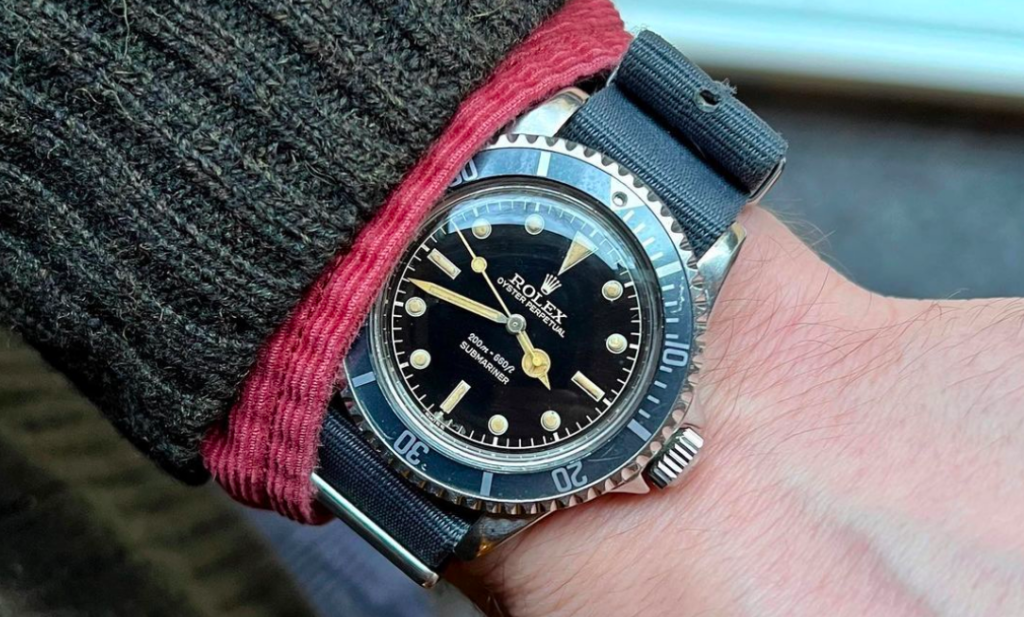
Within the collector world, you’re probably best known for the two websites you created on the Rolex GMT Master and Explorer. Why did you want to create these encyclopedic sites, and how have they influenced the way you collect today?
It’s partially due to my annoyance that I eventually came around to liking watches that I initially didn’t like but you did. Eventually, I decided that, fine, Rob is correct, Andrew’s wrong. And now I do like these watches…begrudgingly.
Wait – you didn’t like the GMT Master initially?
I thought GMTs were fine. The one I really didn’t appreciate initially was the Explorer. But then you got your 1016 and I realized it was almost frustratingly simple and utilitarian, but it checks all the right boxes. So as time went on and I got more exposure to them, my interest grew and I decided I should try to find examples of my own.
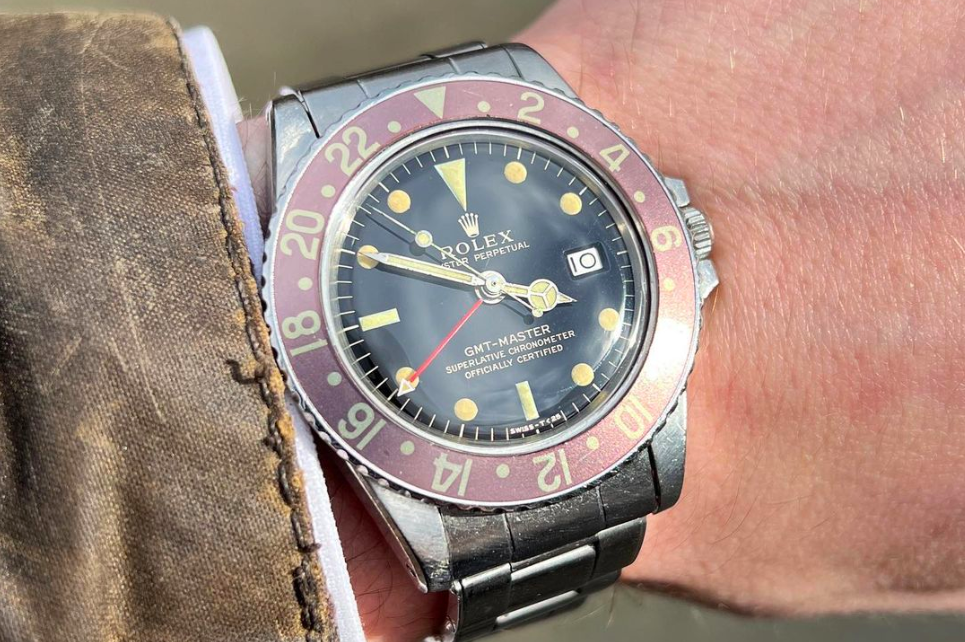
So how did that evolve to creating full websites for each watch?
My role outside of watches involves medical research, which is really detail-oriented and involves a more methodical approach to figuring out what is correct and “accepted.” I think there are many parallels with the watch world in this respect, so it came very naturally to me to do deep dives on vintage Rolex references that others hadn’t previously documented.
It started as me just staying up late and building my own “catalog” of dial marks and similarities throughout the production runs, and then I started to build a more comprehensive outlook using other collectors’ and dealers’ examples and figured it made sense to document it. As often happens, it started out as a tool for my personal use, but I eventually realized that it would be useful to all collectors who often have these same questions but don’t know where to look.
That’s a big time commitment.
It was. But there’s definitely a “pay it forward” element to this hobby and I’ve also had a number of GMTs and Explorers that have surfaced through my websites and ended up in my collection or friends’ collections. With that said, I try to be purposeful in not letting people take advantage of me by constantly peppering me with repeated “is this correct” messages or emails. All of the work I’ve done is a guide, but it’s just me trying to piece things together, and of course Rolex will always stay silent on this topic.
Oddly, I just realized you don’t have a GMT or Explorer in your collection right now. Have you grown tired of them?
[Editor’s Note: Since this interview took place, Andrew has added an incredible 1016 Explorer with unique provenance]
I don’t, no. And it’s on purpose, actually. I like to keep a small collection – ideally under ten watches – and I feel like there’s a lot more in the watch world to explore. There are so many interesting brands and references and Rolex is such a tiny part of it all, so I try not to let vintage Rolex dominate my watch box. With that said, I’ll definitely continue to buy any GMTs or Explorers that come my way through the sites and have interesting stories though – I’m not bored of them! They’re fantastic watches and I do somewhat regret selling a couple of the really pristine examples I’ve had over the years.
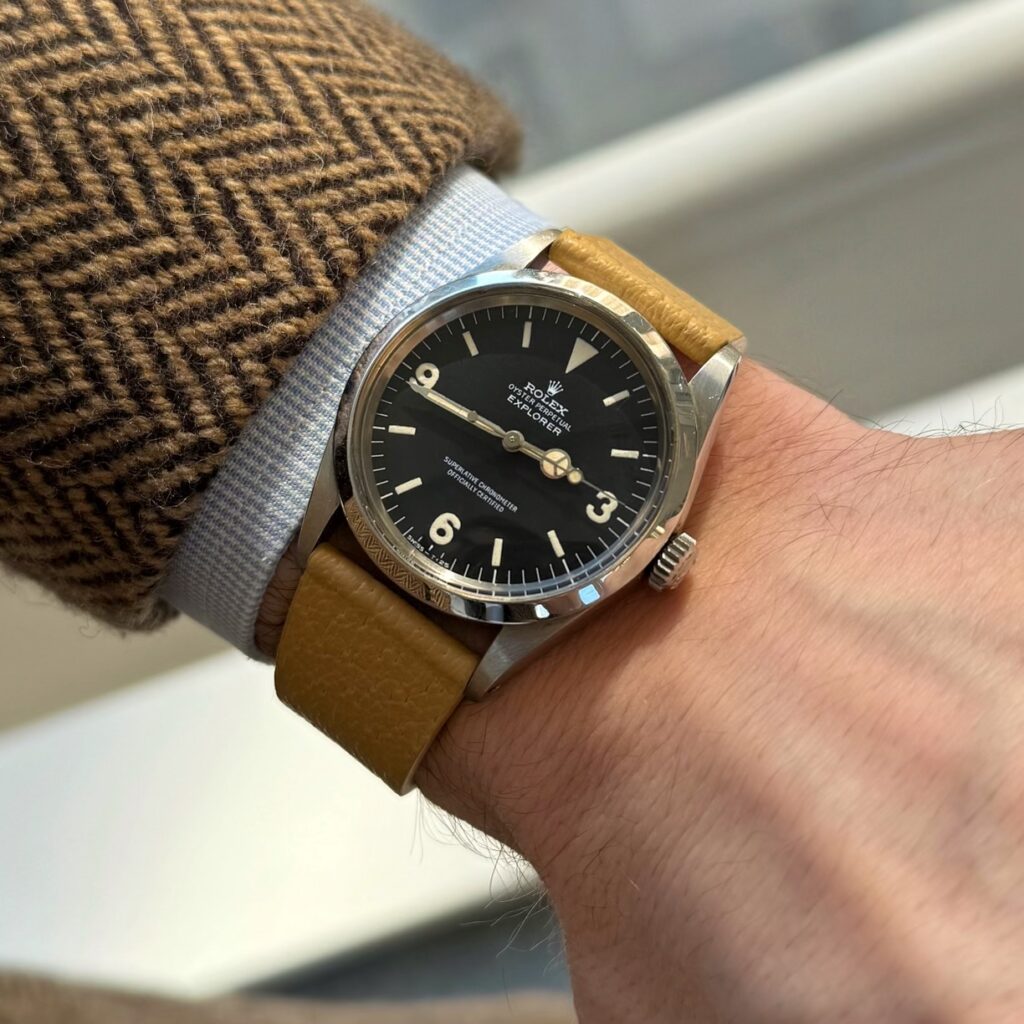
So given your interest in exploring the broader watch world beyond vintage Rolex, what is most exciting to you right now? I feel like your collection is so well balanced, particularly in comparison to my own.
I think neovintage and dressier watches are the things that I’m spending the most time on these days. As you know, [chuckles] I’m a collector who loves minutia, and the evolution of watches in the 80’s and 90’s is fascinating to me the more I learn about it. These brands were trying to maintain their hand-made and charming past while also modernizing to meet the demands of the current time. Plus there were many 34-38mm offerings, which is the sweet spot to me. As much as I hate the Patek 3940, it’s a great example of how perfect things were before the brand started stretching and enlarging the dial fonts by 40% to appeal to old men who couldn’t read the old dials anymore.
Wait – I’m so glad you volunteered this. You are maybe the only person I know who truly dislikes the 3940.
Yeah. Some experiments end up going wrong, and Patek’s experiment with that case was terrible [laughs]. But at the same time, they got the other 95% right, so it wasn’t all bad, I suppose.
Respect to you for dying on this hill…but you’re wrong. Anyways, what neovintage watches are you spending time learning about now?
I think the other two members of the “Holy Trinity” – Vacheron and AP – had some really, really interesting things that they were putting out, as well as early Breguet during the Daniel Roth period. Some of those, like the Breguet tourbillons and the AP “Star Wheel,” were modern interpretations of very classical pocket watch and watch designs. Even the competitors to the Patek 3940, such as the QPs from Vacheron and AP, were classically styled and got so many things right.
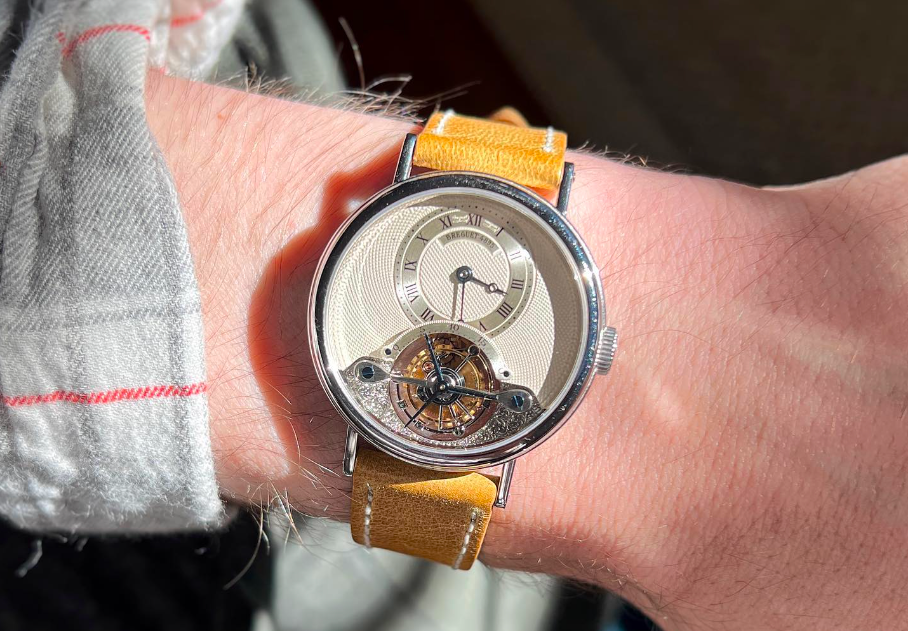
Totally agree. And even below those, there’s an entirely different layer of brands early into their production – like early Lange, Parmigiani, Roger Dubuis, Urban Jurgensen etc. – that are super interesting. Also things that neither of us would have considered collecting even five years ago.
Agreed. Neovintage still has the charm and feeling of a lack of commercialization. You know, back before watches were marketed towards the future “GQ Watch Collector of the Year.“
Thank you for organically tucking that in.
I try. But back to your question, yes, it’s such an interesting time period because it’s clearly tied to the past but also created a direct link to many of the watches still being offered by the big manufacturers today. The watches have gotten bigger and have more mechanical prowess and technology as they’ve all gone to the in-house world, but it’s essentially the same stuff.
I also think there’s been a broader maturation of the watch universe, where there are a limited set of brands that were making watches during the neovintage period. There were, what, maybe 30, 40, 50 brands making noteworthy watches during those years? And there are smaller brands or references that come and go, but there are only so many watches that can be hyped up and taken seriously by collectors, so it feels like particularly for neovintage, the market is maturing to the point where rarity of specific examples has become the biggest game in town. I don’t have a problem with it – in fact, I like it, because it makes the hunt for those rare, hyper limited production examples fun.
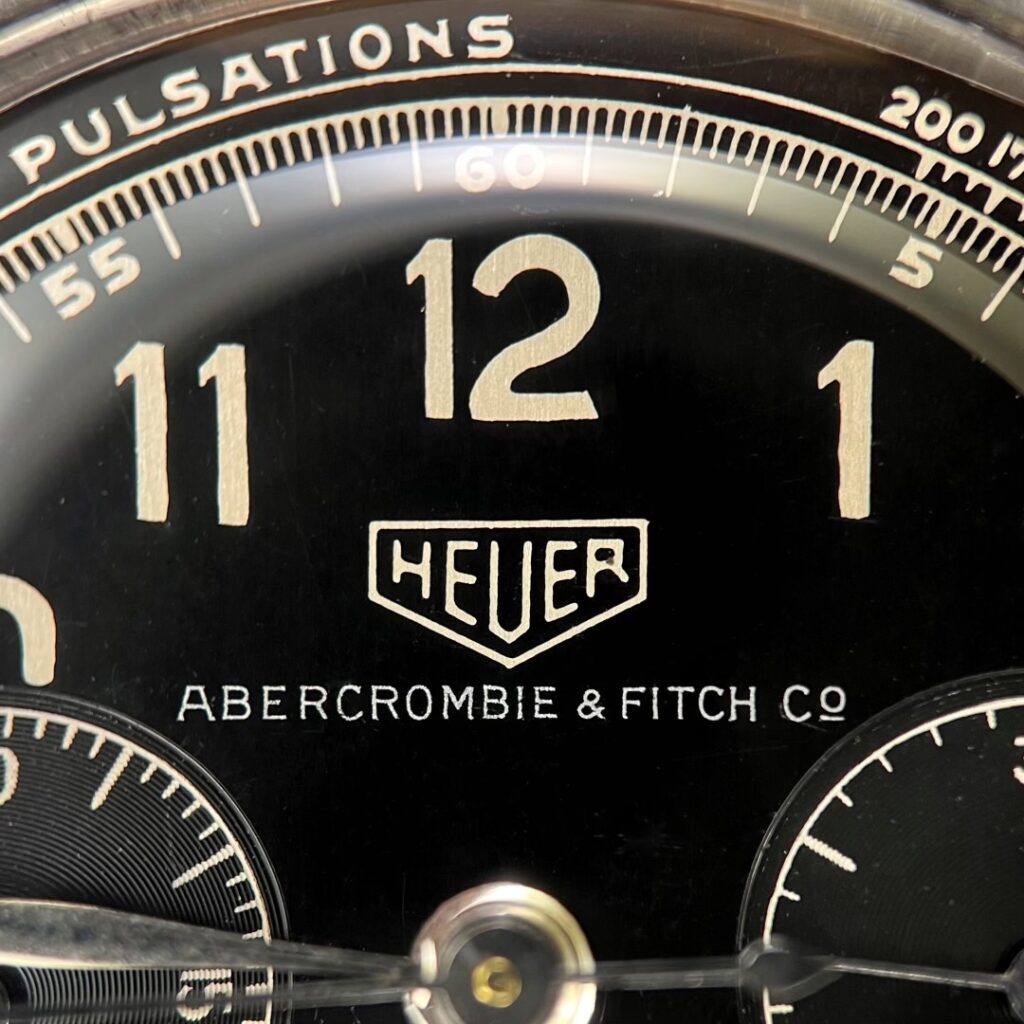
You raise a great point about how the neovintage market has already started to mature and change in just a short time. We’ve both been collecting for about eight years now – what do you think has changed the most in the overall watch market during this time?
Hm, good question. I mean, not being an insider, these observations are just things that can be seen from the outside. I think auctions continue to play a huge role in how the market is perceived, but it’s shifted from a couple highly visible moments per year to a year-round cycle. Add in that auction houses have moved a high percentage of lots to online auctions, and it’s become harder to really glean anything from what these auction results mean.
And in that same time, buyers have shifted to a mentality of not wanting to go through the whole process of buying at auction and having to go through gatekeepers, wait an extended period to get the watch, etc. That’s where a lot of the more specialized sellers and dealers have come in, pushing new brands or focus areas and also playing a role in the education and scholarship around these previously “hidden” brands – even if it’s clearly for commercial intent.
When we first started collecting, the market’s focus was firmly on vintage watches, and within that was limited to 7-8 brands. As more people have entered the market – dealers, auction platforms, and collectors – the market has gotten significantly wider. And that’s a good thing, I think.
I completely agree.
At the same time, it’s a little funny that the more things change, the more they stay the same. It seems like the same people who have been running the auction houses are now moving into running the online platforms and there’s a sense that everybody is trying to “keep up with Joneses.” All the major players are trying to stay to stay one step ahead of the others, but it’s also created a pretty homogenous approach to how people are able to buy and sell in today’s market.
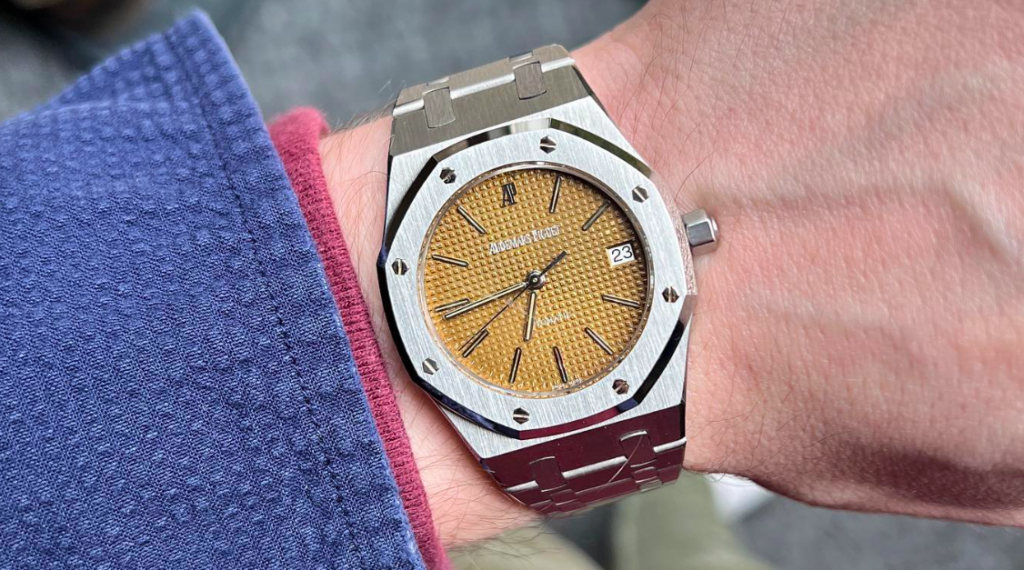
Okay – you’ve been a good sport, so I want to ask you some “quick hitters” to round out our chat and give people a window into what makes you “tick” – sorry, I couldn’t resist. Say whatever comes to mind first for the following questions.
What are you wearing right now?
My white gold modern Daytona on Oysterflex. I bike to work and don’t like to wear a vintage watch when biking, so this ends up getting a lot of wrist time.
Favorite vintage watch?
Patek Philippe reference 1463. Perfect size and aesthetics.
Favorite modern watch?
FP Journe Octa Calendrier.
Favorite city?
San Sebastian.
Favorite car?
Aston Martin DB5 in British racing green.
Favorite movie?
The Shining.
Favorite book?
This changes every week, but as of now – The Anomaly, by Hervé Le Tellier.
Favorite sports team?
Chicago Cubs.
Alright, final question – if you can only keep one watch from your collection for the rest of your life, which would it be?
My 5512 Rolex Submariner.
My sincere thanks to Andrew for taking the time to chat with me – even if he is horribly wrong in his opinion of the Patek Philippe 3940. All pictures above are courtesy of Andrew’s Instagram feed, @t_swiss_t.
